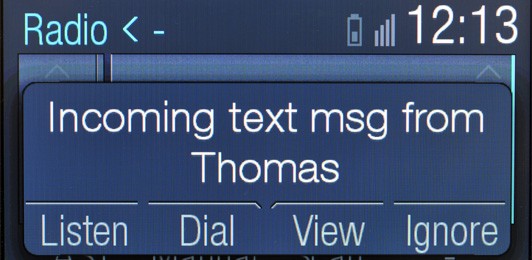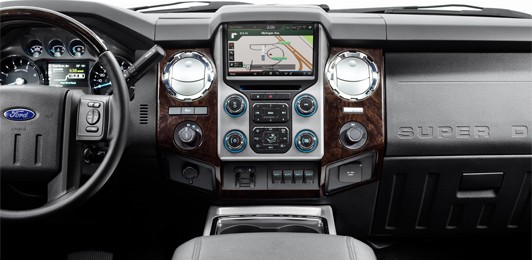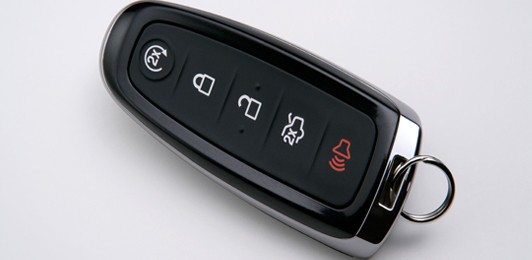Encouraging Safer Driving
The U.S. Department of Transportation conducted a national survey from 2005 through 2007 that sought to identify environmental, vehicle and driver factors in crashes involving light passenger vehicles. They found that in 95 percent of the crashes studied, a driver-related factor was the “critical reason for the critical pre-crash event.”
According to studies by the Insurance Institute for Highway Safety, the crash rate for 16–19-year-old drivers is four times higher than the crash rate for older drivers. The difference is attributed to both the immaturity of teen drivers (e.g., higher rates of risky driving such as speeding) and lack of experience (e.g., less capability in unfamiliar situations).
We at Ford have developed an array of programs and technologies that help to encourage safer behavior on the roadways for both experienced and novice drivers.
For example, Ford Driving Skills for Life (FDSFL), Ford’s driver education program, demonstrates our commitment to help new drivers to improve their motoring skills. In the U.S., FDSFL focuses on teen drivers; in our Asia Pacific and Africa markets, the program is aimed at first-time drivers of all ages.

Summer Schaive and Allison Brockel from Riverton High School show off their “Teens Against Distracted Driving” shirts at a Ford Driving Skills for Life event that was part of Operation Teen Safe Driving
In 2012 in the U.S., FDSFL plans to visit 30 high schools in five states with a transporter featuring specially equipped vehicles and professional instructors. The program delivers a full day of multifaceted activities that build young drivers’ skills in four key areas: driver distraction, speed/space management, vehicle handling and hazard recognition. FDSFL reached 35,000 teen drivers on the high school tour in 2011, and the same number is expected to participate this year. In addition, FDSFL continues to provide interactive web-based training called “The Academy” on www.drivingskillsforlife.com, and free materials upon request for students, educators, parents and community organizations.
In Ford’s global markets, FDSFL is in its fifth year training newly licensed drivers in Asia and Africa, with programs in China, India, Taiwan, South Africa, Thailand, Vietnam, the Philippines, Indonesia and Malaysia. FDSFL programs are tailored in each of these markets to reflect the local driving environment and road conditions. So far, 50,000 people have participated in the program across Asia and Africa, with another 12,000 expected in 2012.
Every year, Ford partners with the Illinois Department of Transportation, secretary of state and state police to run a seven-month statewide program – modeled on Ford Driving Skills for Life – designed to reduce teen crashes and fatalities. Called Operation Teen Safe Driving, this campaign gets high school students directly involved by challenging them to develop and implement a teen safe driving community awareness campaign using FDSFL resources. The program involves 883 schools in 102 Illinois counties, and has the support of the governor, the secretary of state and the Chicago Board of Education. During the 2010–2011 program year, the program reached 3.2 million Illinois residents. The results have been remarkable: Illinois has seen a 45 percent reduction in teen fatalities since the program was launched in 2007.
Another way Ford has been working to encourage safer driving is to focus on the issue of driver distraction. For example, Ford SYNC® – while primarily a convenience feature – provides a way for drivers to use cell phones and MP3 players through voice commands alone, while keeping their eyes on the road and their hands on the wheel. Ford’s SYNC system even addresses concerns regarding text messaging: When a text message arrives, SYNC does not display that message but instead gives the driver the option of ignoring it or reading it aloud through text-to-speech technology. It then provides a list of canned replies for the driver to select rather than key-in or compose manually. SYNC also locks out certain features (such as adding or editing a phone book contact) while driving.

The SYNC in-car connectivity system, which can read aloud incoming messages through a text-to-speech feature
In addition, the MyFord Touch® driver connect technology – launched in 2010 – replaces many of a vehicle’s traditional buttons, knobs and gauges, and is designed to increase focus on driving while providing access to information, entertainment and connectivity features. The system includes a state-of-the-art voice recognition system with more than 10,000 available commands and color LCD displays, along with two five-way controllers on the steering wheel. While MyFord Touch has been continuously improved with each successive vehicle introduction since 2010, Ford launched the first major software upgrade of the system with the 2013 Ford Taurus and Flex. The upgrade includes better voice recognition and enhancements to the touch screen interface, with faster response time, simpler graphics and bolder text that is easier to use. These features encourage drivers to maximize the time their eyes are on the road and their hands are on the steering wheel. The upgraded system will roll out to all new 2013 models that offer MyFord Touch, and the improved software will be offered to more than 300,000 current owners.

The 2013 F-Series Super Duty with MyFord Touch
Finally, the Ford MyKey® system is an innovative technology designed to help parents encourage their teenagers to drive more safely. MyKey allows owners to program a key that can limit the vehicle’s top speed and the audio volume. MyKey encourages safety-belt usage by enabling Ford’s Belt-Minder® to chime every minute indefinitely until both of the front passengers are buckled in, rather than ceasing after five minutes, and also through a “no belt/no tunes” feature that mutes the audio system until the belt is buckled. In addition, MyKey provides an earlier low-fuel warning (at 75 miles to empty rather than 50); sounds speed-alert chimes at 45, 55 or 65 mph; and will not allow manual override of other safety systems.

The Ford MyKey
Early in 2012 on the Ford Taurus and Explorer, Ford upgraded MyKey with a world-first technology that allows parents to limit a vehicle’s top speed at any of four different settings: 65, 70, 75 or 80 mph. The upgrade, which will quickly be offered across a variety of Ford and Lincoln models, also invokes SYNC’s Do Not Disturb feature, which sends incoming phone calls and text messages to the synced phone’s mailbox, and it allows parents to block explicit radio programming while their teens are driving. For the 2012 model year, MyKey is available on nearly all Ford Motor Company retail vehicles in North America, and its availability is expanding to other regions.
